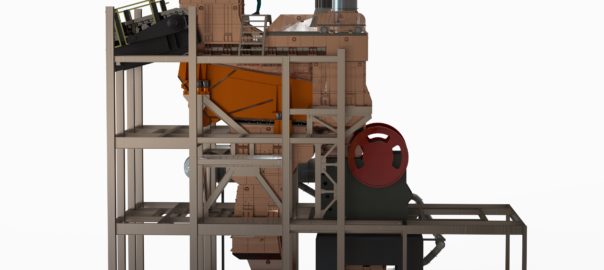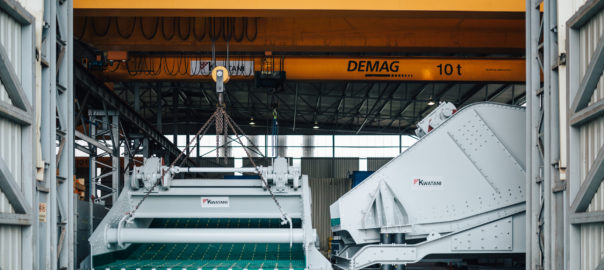Drive technology specialist SEW-EURODRIVE says it is installing four of its large segmented girth gear systems at De Beers’ Venetia Diamond Mine in Limpopo province, South Africa.
Venetia mine, in operation since 1992, is upgrading its two primary scrubbers and two secondary scrubbers, and the girth gear replacement is an integral element of this project, according to SEW-EURODRIVE.
According to Bruce Farthing, Project Engineer at SEW-EURODRIVE, the order was placed in 2020 and all four units were manufactured and delivered within six months. This short lead time was achieved despite the global disruptions caused by the COVID-19 pandemic.
“We have planned the installations in close collaboration with Venetia mine, making sure our teams are ready when the mine’s shutdown periods allow,” Farthing says. “The first girth gear was installed on one of Venetia’s secondary scrubbers in September 2021, confirming the accuracy and duration of our installation procedure.”
The expertise of the installation team was brought to the fore by the scrubber’s specific design. The bearing design in particular makes it impractical to bring the whole drum to ground before changing over the girth gear, according to the company. Instead, the replacement has to be conducted with the drum in situ, at a height of about three storeys high.
“In the first installation, we, therefore, assembled the girth gear on the ground, lifting it into position once the old components had been removed from the scrubber,” he says. “The challenge, of course, was to ensure no damage to any of the new components, which we managed with careful planning and experienced execution using large overhead cranes.”
These large girth gears measure 5.3 m in diameter and weigh about six tonnes each. Given the scale of the equipment, the segmentation of the gear makes for easier transportation and handling. He explains that each girth gear is made up of 10 identical segments which are easily assembled on site.
“The segments allow for relatively quick assembly with less lifting equipment,” Farthing says. “A further advantage is that individual segments can be kept in stock and used as replacements in the event of a breakdown – keeping downtime to a minimum.”
The second and third installations – to be conducted on the two primary scrubbers – are scheduled for later this year. With the limited time available during a plant shutdown, the installation team adopts a 24-hour work cycle.
The contract includes the supply of SEW-EURODRIVE’s large two-stage industrial gearboxes and the external pinions to drive the girth gear. The motors are coupled to the gearboxes using a fluid coupling on a purpose-built, drop-in baseplate. Smaller gearboxes from SEW-EURODRIVE’s X series range are also coupled to the main gearbox as auxiliary drives for commissioning and maintenance.
Farthing notes that the company’s segmented girth gear systems have recently been a popular choice for South African customers, with six orders being received within about a year. Apart from the four supplied to De Beers Venetia Diamond Mine, SEW-EURODRIVE also recently supplied these solutions to applications in a paper mill and a cement mill.









